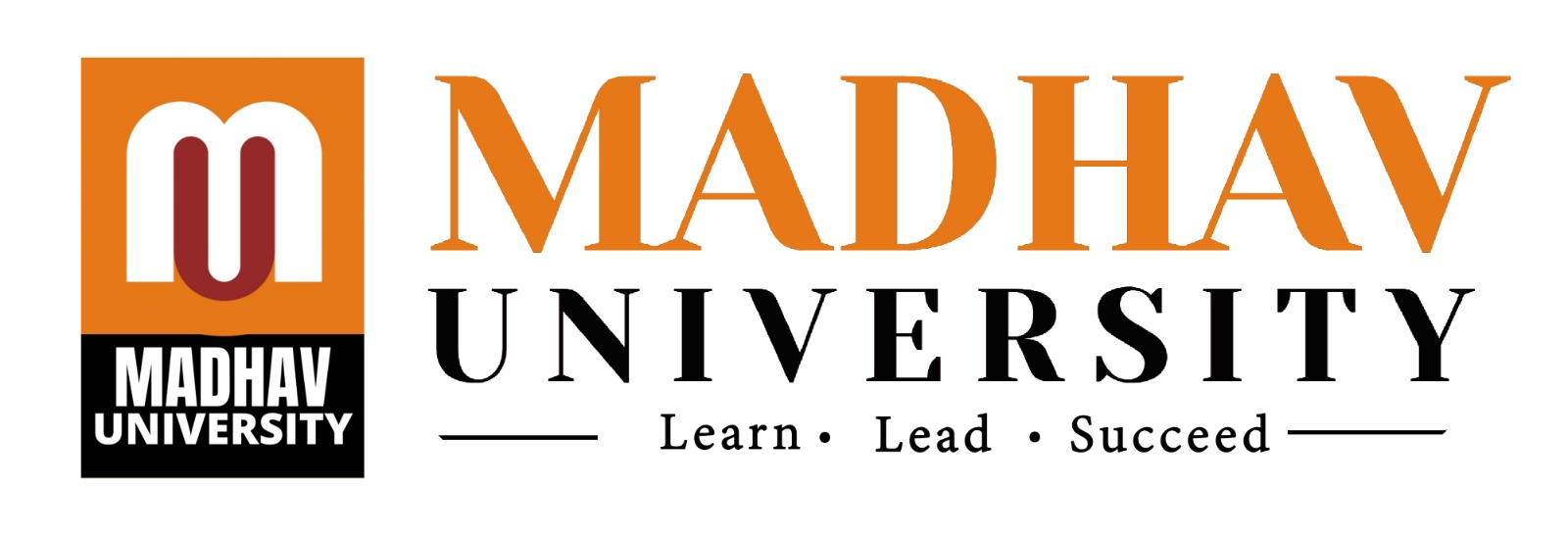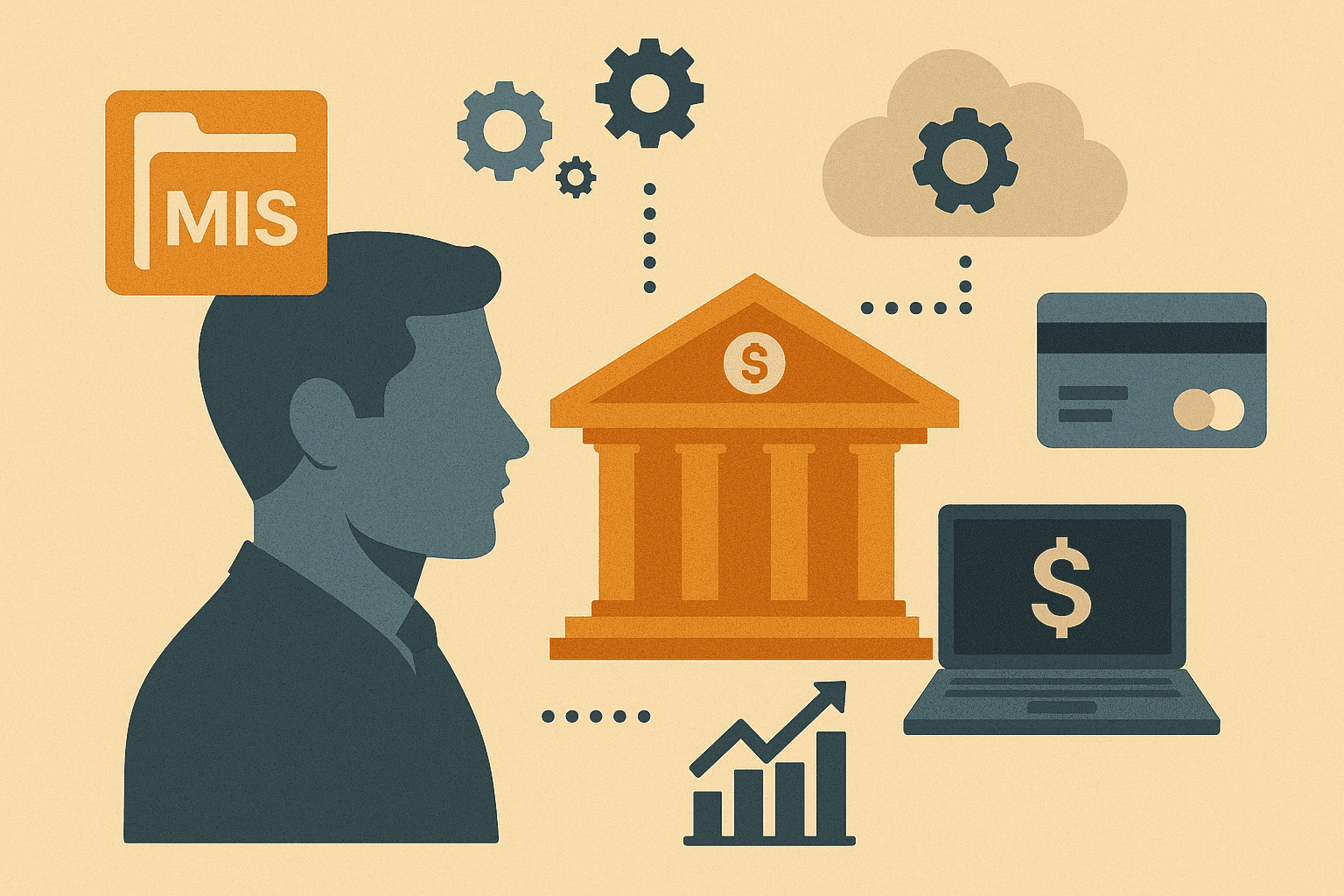A Management Information System is a set of combined procedures that gathers and produces reliable, relevant, and properly organized data that supports the decision-making process of an organization. To sum up, it is a group of processes through which data is obtained, sorted, and displayed in a useful way for decision-making purposes.’
Management Information Systems are handy tools to review and control a company’s operations. The main goal of these systems is to organize all data collected from every level of the company, summarize it, and present it in a way that facilitates and improves the quality of the decisions being made to increase the company’s profitability and productivity.
These systems are typically computer-based including either simple Excel sheets or more complex platforms. The information being collected and gathered for the system normally comes from both inside and outside sources.
Role of MIS in Banking Industry
A bank is understood as a place where financial services such as checking/savings and providing credit to customers are offered. The scope of this service in today’s world is expanded to a “Financial Services Super Shoppe” where the banks have become an instrument in providing financial assistance to some activities as a policy or by regulation or for meeting sociology-economic obligations. In banking also, the concept of the financial product has come in.
The customers choose a bank mainly on the following three factors:
- The ease of doing business.
- The quality of personnel and service.
- The range of financial services.
The factors outrank the factors such as the location, interest rates, layout, banking hours, etc. The bank has a broad range of customers like individuals, institutions, trusts, business organizations, Government, and local bodies. The banks deal with some transactions, which also vary widely regarding length and complexity. The bank customer, like any other service industry, is interested in getting final results quickly. The unique service in banking mostly means solving the customers’ problems in financial matters, and the single most widely used measure of quick service is the elapsed time of transaction execution. For example, the time taken to credit the amount, withdrawal of cash, the sanction of a loan or credit facility, etc. are the norms for deciding an excellent service.
The MIS in the banking industry revolves around this aspect. The customer of the bank would like to know the status of the account very fast to make decisions on withdrawals or payments. He is interested in obtaining loan assistance for his particular needs with a reasonable rate of interest. Some customers would be interested in tax consulting and tax planning. Mother group of customers would be interested in investment guidance for investing in stocks and securities. To avoid the inconvenience of going to some places for payment of small amounts, customers need service at the counter to pay electricity bills, telephone bills, taxes, and duties to the local bodies and the Government.
Hence, the MIS is to be designed to identify, decide, and develop a service strategy for offering a distinctive service to a broad range of customers seeking a variety of service demands. The following points should be taken care of while designing an MIS for a bank:
1. Customer database:
The service expectations and perceptions revolve around the following factors:
- Customer — individuals, companies, institutions, etc.
- Operator — housewife, employee, the officer of the organization.
- The range of services — savings, credit checking, and payment, other financial services.
- Class of customers — income group, corporate bodies, etc.
- Working hours — morning, afternoon, evening, etc.
The management of the bank should create a customer database and analyze the needs of the customers from time to time to create a suitable service package.
2. Service to the account holders the customers (account holders) need constant advice on the status and its operations. Most of the customers use their accounts for routine payments affecting the balance. Many times the account holds a large amount and it is not transacted for any purpose.
The MIS should give the following reports to the management:
- The non-moving account.
- The account had a balance of more than, say Rs.50, 000.
- The account was going down below the minimum balance.
- The regular payments were not made.
- The routine credits have not arrived.
- The defaults on loan repayment.
- The delays in crediting cheque amounts.
A sudden rise and fall in the account movement.
The account holders were giving 80% of business to take personal care of their service expectations and perceptions (the CRM perspective).
Based on these reports, the management of the bank should alert or warn the customer to act on his account to correct the situation. Personal and individual account holders need such a service badly as they have to manage their domestic or business activities in a tight money situation. The MIS built around such demands would help not only the bank manager but also the account holder.
3. Service for business promotions the bank finances can be utilized in some ways to increase banking operations by offering credit to the right kind of customers. It is, therefore, necessary to study the trends in the business industry and solicit customers from the upcoming and growing business sector.
The MIS should concentrate on data collection from various sources to analyze and conclude the future corporate strategy. Such information will help the banker to move out to talk to the customer to obtain business for the bank. Such support will also reduce the risk of the account going into the red and bad debt.
4. The index monitoring system One more feature of the MIS is to monitor the variety of indices and ratios related to banking operations, which are internal to the banking business. Some of these ratios fulfil legal needs like the Cash Reserve Ratio (CRR)/ Statutory Liquidity Ratio (SLR); some meet the policy needs like the priority sector ratio to total advances and so on. It is necessary to build MIS applications to support the bank manager in making decisions to keep different norms and ratios within acceptable limits. He should also get support through the Decision Support Service to handle the problem of not meeting these legal standards.
5. Human resource upgrade there is a lot of human aspect in the banking operations. With computerization, the service may become faster or quicker, but still, it requires a human touch and skill. It is, therefore, necessary to upgrade the expertise and knowledge of the bank employees to offer proper service to the customers. The financial world changes so fast that retaining a client base is a challenge. The financial service business is becoming competitive and offering an excellent, distinctive service is the only solution to improve the business prospects.
The service has to be more aggressive for particular problem-solving of the customers. The MIS should identify such needs and offer help to the management in designing training courses for the employees to improve their knowledge about banking and the financial world. In the banking industry, the traditional methods of real performance are at odds with good service. An excellent financial performance may not necessarily mean a good service quality.
The customers of the bank expect the service to be delivered in a smooth, problem-free, efficient, and timely manner. The managers in the bank have the service as well as the financial goals to achieve. It is, therefore, necessary to set internal standards, accuracy, responsiveness, and timeliness. The systems and the resources provided to meet these standards need monitoring, and the MIS will provide feedback on these standards so they can be regulated and controlled.
For example, a multinational bank has set standards on satisfying the queries in the first phone call, cheque clearance time, waiting time, etc. It has set eighty-one separate ‘Quality Indicators’ for the Bank Card business and so on. The MIS measures these standards and gives feedback on achievement or non-achievement.
– Prof. (Dr). Mukesh Kumar Mahawar
Professor Faculty of Commerce and Management
Madhav University, Pindwara, Sirohi (Rajasthan)

